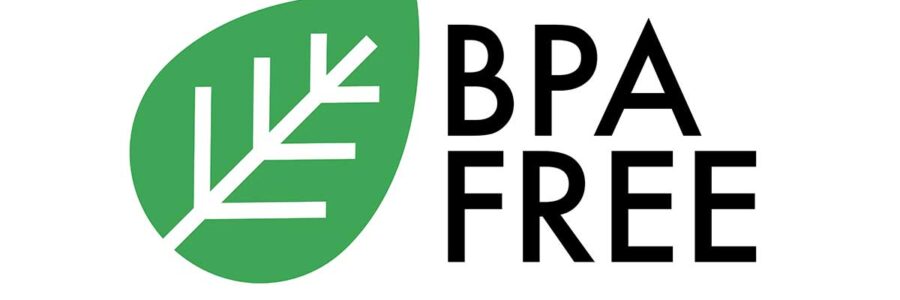The clamor for BPA-free products has made them the hallmark of safety for consumers concerned about chemical exposure. Yet, recent insights suggest BPA-Free Labels may be more about marketing than safety. Companies might be replacing one harmful chemical with another, cloaking the substitution with savvy marketing strategies. This deceptive practice brings to light critical concerns regarding the authenticity of safety claims and the integrity of product labeling, reminding us that appearances can be deceiving and urging a deeper examination into the substances we bring into our lives.
Tracing the Roots: BPA, Its Alternatives, and the Emerging Concerns
Bisphenol A (BPA) garnered negative attention due to its estrogen-like properties, prompting worries about its potential effects on health, such as hormonal imbalance, fertility complications, and a heightened risk of some cancers.[1] With growing public awareness and demand for safer options, the emergence of BPA-free labels seemed like a win, signaling the elimination of this controversial chemical from products. However, the move away from BPA led to the adoption of substitute chemicals like Bisphenol S (BPS) and Bisphenol F (BPF), which are now under scrutiny for their safety.[2]
This switch has been likened to jumping from the frying pan into the fire, with initial investigations into these substitutes revealing they may harbor risks akin to BPA. This realization dims the once-promising allure of BPA-free products, revealing a more complicated issue than merely replacing one chemical with another. The evolution from BPA to its alternatives underscores the complex nature of chemical safety in consumer goods and highlights the necessity for comprehensive research and regulation.
The Perception Game: Marketing Genius vs. Actual Safety
In the consumer goods sector, perception often outweighs reality, a fact skillfully exploited by companies to their advantage. The BPA-free label is a prime example of marketing’s power to shape consumer perceptions and influence purchasing decisions. By highlighting the absence of BPA, businesses cleverly shift focus away from the potentially harmful replacements. This tactic preys on the widespread but mistaken belief that removing one harmful ingredient renders a product safe, fostering a misguided sense of security among consumers and potentially exposing them to undisclosed risks.
Beyond BPA: Spotlight on New Chemical Contenders
As shelves become inundated with BPA-free products, attention shifts to the chemicals filling BPA’s void, namely Bisphenol S (BPS) and Bisphenol F (BPF). Initially celebrated as safe replacements, these chemicals are now under a microscope. Preliminary research suggests they may pose similar health risks to BPA, including endocrine disruption and an elevated risk of cancer,[2] challenging the narrative of safety associated with BPA-free products. This developing story highlights the ongoing complexity of ensuring chemical safety in consumer items and underscores the importance of continuous research and alertness.
Empowering Consumers: How to Navigate Misleading Labels and Conduct Research
Faced with a deluge of potentially misleading labels and marketing terms, consumers must become adept at discerning and researching to safeguard their health. Recognizing that a “BPA-free” label does not automatically imply overall safety is paramount. Investigating the materials used in products and consulting resources from credible health and environmental organizations can shed light on the safety profiles of various chemicals. Additionally, choosing products made from known safe materials like glass or stainless steel can help reduce exposure to potentially hazardous chemicals. Armed with knowledge and making choices based on thorough safety information rather than marketing claims alone is the strongest defense against deception.
The Critical Role of Regulation and Consumer Advocacy
The saga of BPA and its alternatives underscores a broader issue: the critical need for enhanced regulation and consumer advocacy in product safety. Regulatory bodies often trail behind the latest scientific developments, creating loopholes that can be exploited for profit. Strengthening regulatory frameworks to ensure comprehensive testing of new chemicals before market introduction is crucial. Consumer advocacy groups also play an essential role in demanding transparency and accountability, fighting for the public’s right to be informed about the chemicals in everyday products. Supporting these efforts and advocating for stricter safety standards can drive the necessary changes to ensure truly safe consumer products.
In Summary
The journey through the product safety landscape, especially in an era dominated by “BPA-free” claims, demands vigilance and proactive consumer behavior. While marketing strategies may obscure the true nature of product safety, educating oneself and scrutinizing beyond superficial claims are essential practices for informed decision-making. A collective push for tighter regulations and transparency is key to unlocking a future where products are genuinely safe. Remember, the power of informed choice is a potent tool in the quest for health and environmental stewardship.
References:
- Gao, Hui, et al. “Bisphenol A and hormone-associated cancers: current progress and perspectives.” Medicine vol. 94,1 (2015): e211. doi:10.1097/MD.0000000000000211
- Alharbi, Hend F et al. “Exposure to Bisphenol A Substitutes, Bisphenol S and Bisphenol F, and Its Association with Developing Obesity and Diabetes Mellitus: A Narrative Review.” International journal of environmental research and public health vol. 19,23 15918. 29 Nov. 2022, doi:10.3390/ijerph192315918


